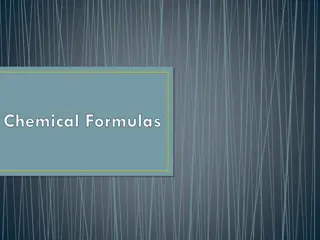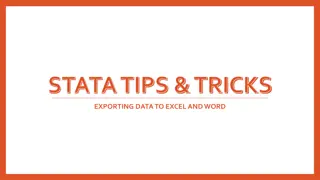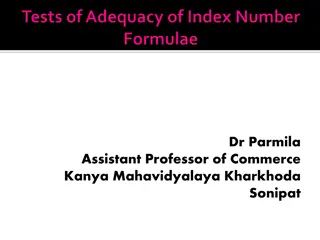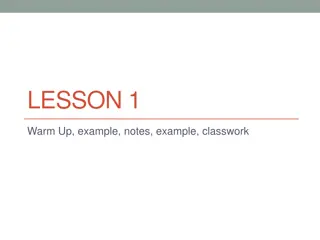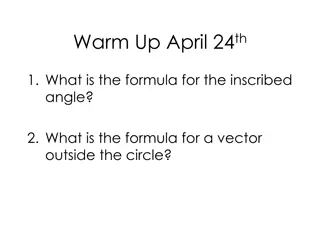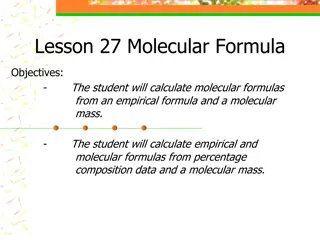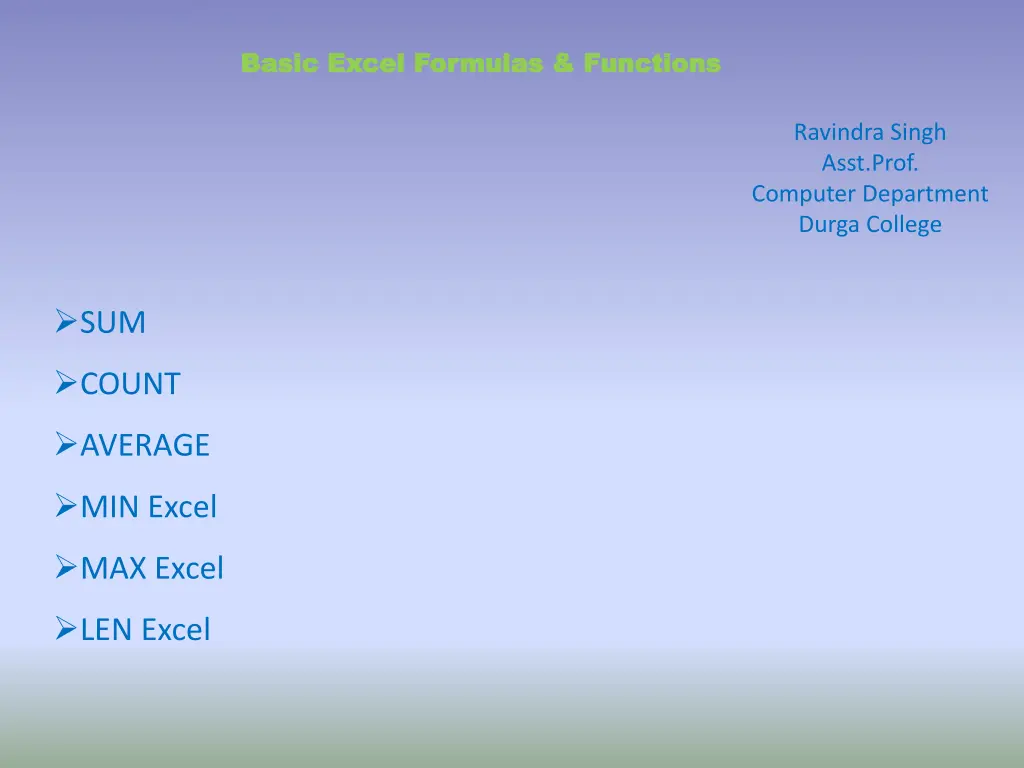
Mastering Excel Formulas: Functions and Usage Tips
Dive into the world of Excel formulas with this guide covering essential functions like SUM, COUNT, AVERAGE, MIN, MAX, and LEN. Learn how to efficiently handle data calculations and manipulation in Excel.
Download Presentation

Please find below an Image/Link to download the presentation.
The content on the website is provided AS IS for your information and personal use only. It may not be sold, licensed, or shared on other websites without obtaining consent from the author. If you encounter any issues during the download, it is possible that the publisher has removed the file from their server.
You are allowed to download the files provided on this website for personal or commercial use, subject to the condition that they are used lawfully. All files are the property of their respective owners.
The content on the website is provided AS IS for your information and personal use only. It may not be sold, licensed, or shared on other websites without obtaining consent from the author.
E N D
Presentation Transcript
Basic Excel Basic Excel Formulas & Functions Formulas & Functions Ravindra Singh Asst.Prof. Computer Department Durga College SUM COUNT AVERAGE MIN Excel MAX Excel LEN Excel
SUM Function This basic Excel formula is used to get the sum of the value in one or more cells or ranges.The SUM function returns the sum of values supplied. These values can be numbers, cell references, ranges, arrays, and constants, in any combination. SUM can handle up to 255 individual arguments. =SUM(value1, value2 .) Result = 41 (See Image below)
COUNT Function The COUNT Function[is an Excel Statistical function. This formula counts the value in one or more cells This function helps count the number of cells that contain a number, as well as the number of arguments that contain numbers. It will also count numbers in any given array. It was introduced in Excel in 2000. =COUNT(value1, value2 .) Result = 5 (This will Include Cell A3 since this formula calculates both text and numeric value. See Image below).
AVERAGE Function The Excel AVERAGE function calculates the average (arithmetic mean) of supplied numbers. AVERAGE can handle up to 255 individual arguments, which can include numbers, cell references, ranges, arrays, and constants. = AVERAGE (value1, value2 .) Result = 4 (See image below)
MIN Function The MIN function checks your data range and returns the smallest value in the set. Its syntax is the following: MIN(value1, value2 .) number1, [number2], is the series of values from where you want to get a minimum. Number1 is required while [number2] and the following are optional. There are up to 255 arguments allowed in one function. The arguments can be numbers, cells, arrays of references, and ranges. However, arguments like logical values, text, empty cells are ignored. MIN(value1, value2 .) Result = 2 (See Image below)
MAX Function The MAX Function is categorized under Excel Statistical functions. MAX will return the largest value in a given list of arguments. From a given set of numeric values, it will return the highest value. Unlike MAXA function, the MAX function will count numbers but ignore empty cells, text, the logical values TRUE and FALSE, and text values. MAX(value1, value2 .) Result = 9 (See Image below)
LEN Function The Excel LEN function returns the length of a given text string as the number of characters. LEN will also count characters in numbers, but number formatting is not included. =LEN(text) Cell A1 value is Shivam, which has a 6-character length. So, the result would be 6 (See image below).

